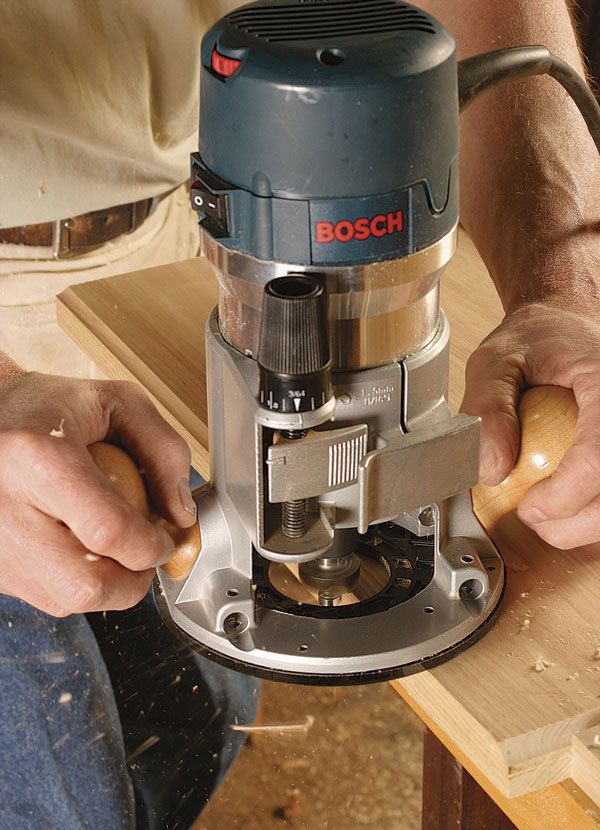Handheld Routing
Gary Rogowski shares tips on cutting edge profiles and curves, and techniques and jigs for straight cuts.
Synopsis: A handheld router with a simple fixed base can cut edge profiles, joinery, and curves quickly and cleanly. The fixed base is versatile enough to take you a long way in woodworking. In this fundamentals article, Gary Rogowski shares tips on buying a router, cutting edge profiles, cutting curves with a template, and techniques and jigs to keep the router on the straight path.
Learning to use your first router is a little like getting acquainted with your first computer, cell phone, or iPod. You’ve heard they can do so many things so well that you wonder if they can make a nice cup of cappuccino, too.
Well, not quite. However, a handheld router with a simple fixed base can cut edge profiles, joinery, and curves quickly and cleanly. In fact, it used to be that a fixedbase router was the easy choice for anyone making their first purchase.
The smarter move nowadays is the combination kit, which packages a single router motor with both a fixed base and a plunge base (for mortises and stopped cuts). For a few dollars more, this gives you plenty of room to grow and a great place to start learning. even if you never take the plunge base out of the box (highly unlikely), the fixed base is versatile enough to take you a long way in woodworking. Let’s see how far.
A few shopping tips
Routers come in different motor and collet sizes. Ignore the horsepower ratings and look for more amperage to get more power— 12 amps should be plenty.
Most routers come with two interchangeable collets, 1⁄4 in. and 1⁄2 in. be sure to get a 1⁄2-in. collet so you can use bits with the beefier 1⁄2-in. shank. This gives you better strength in tough routing conditions and more bits from which to choose. Also compare the ergonomics of the routers on your list before you buy. Feel how each fits your hands, where the on/off switch is, how well the locking handle works. These things will matter to you after you’ve spent hours making various types of cuts.
Cutting edge profiles
Bearing-guided bits cut molding profiles such as roundovers, coves, or ogees into edges using the bearing to limit the width of the cut. Some bits, like rabbeting bits, come with different-size bearings for making wider or narrower cuts.
Don’t push the bearing all the way to the stock on the first pass. Make these profile cuts in a series of light passes to minimize tearout and reduce wear on the router. In fact, this advice applies to any of the cuts described here. Taking aggressively deep passes is hard on the router-bit edges. In addition, be sure to move at a decent feed rate in long grain to avoid burning. Across end grain you want to move even faster, as end grain burns more readily.
From Fine Woodworking #194
For the full article, download the PDF below:
Fine Woodworking Recommended Products

Bosch 12V Trim Router

Double Sided Tape

Ridgid EB4424 Oscillating Spindle/Belt Sander






















Log in or create an account to post a comment.
Sign up Log in